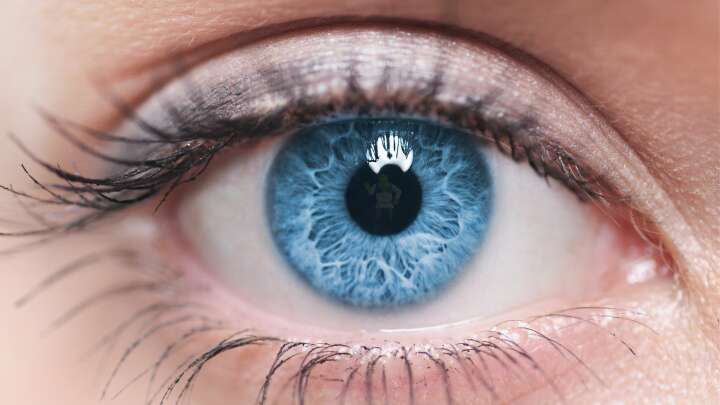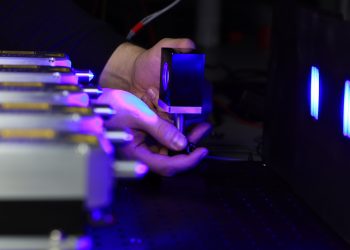Let’s do a thought experiment: imagine a ball sitting on a table. Now imagine some person comes in and pushes that ball, making it roll across the surface of the table until it reaches the edge and falls to the floor.
Now, here’s the question: what color hair did the person have?
Or an easier one: what color was the ball?
For most people, answering those questions would have been something between “easy-peasy” and “doable.” But for a small number – maybe only one to three percent of us – it would have been literally impossible. That’s because they have what’s known as aphantasia: a complete lack of visual imagination, or “mind’s eye”.
Now, if you’re somebody who already has a “diagnosis” of aphantasia, chances are you had to go through a diagnostic test much like the one above. But a new study, recently published in the journal eLife, has found a new way of confirming the condition: by measuring pupil dilation caused by imaginary darkness.
“Our results show an exciting new objective method to measure visual imagery and the first physiological evidence of aphantasia,” reported senior author Joel Pearson. “[We] are now close to an objective physiological test, like a blood test, to see if someone truly has it.”
Currently, aphantasia can be a pretty difficult phenomenon to measure. And it’s not hard to see why: take the exercise above, for example. Maybe you could visualize the ball, but not the person – does that count as aphantasia? Or perhaps you thought you were acing it until we asked about color, and are now wondering if it’s normal to only imagine things in black and white. Maybe you could imagine the ball, but not really “visualize” it, and are now left wondering whether that’s what we meant, or if everyone else is basically surrounded voluntarily by hallucinations most of the day.
It’s not an exact science, is what we’re saying.
“One of the problems with many existing methods to measure imagery is that they are subjective, that is to say, they rely on people being able to accurately assess their own imagery,” said Pearson. That’s why he and his colleagues set out to find an objective test for visual imagination – or lack thereof.
First, they measured pupil dilation in 60 test subjects as they looked at bright or dark shapes against a neutral gray background. Pupils got bigger when presented with dark shapes, and smaller when looking at light shapes – it’s a similar situation to standing in a dark room versus looking at a bright sky.
“The pupillary reflex … optimizes the amount of light hitting the retina,” explained Pearson.
But here’s where things get weird. The second stage of the experiment involved asking the participants to imagine the shapes they’d just seen, and tell the researchers how “vivid” their recollection was. Amazingly, those who reported very vividly imagined shapes were seen to have a stronger pupillary response than those who “saw” a less intense visualization – and participants with aphantasia showed no pupil dilation at all.
“[It] was already known that imagined objects can evoke so-called ‘endogenous’ changes in pupil size,” explained Pearson, “[but] we were surprised to see more dramatic changes in those reporting more vivid imagery.”
“This really is the first biological, objective test for imagery vividness.”
But wait, we hear you cry. Isn’t this still reliant on self-reporting? How do we know the aphantasic participants weren’t just doing it wrong, or not trying hard enough?
Well, don’t cry, because the researchers got there before you.
“Our pupils are known to get larger when we are doing a more difficult task,” said Lachlan Kay, a co-author on the study. And that gave the team a neat control test to make sure their results were reliable: make the participants imagine harder.
“Imagining four objects simultaneously is more difficult than imagining just one,” Kay explained. “The pupils of those with aphantasia dilated when they imagined four shapes compared to one, but did not change based on the whether the shapes were bright or dark.”
In other words, he explained, people with aphantasia “were indeed trying to imagine … just not in a visual way.”
That’s an exciting finding, and not just because it will give some longed-for vindication to the denizens of r/aphantasia. As is so often the case when trying to imagine perceiving the world in a way that’s fundamentally different from what you’re used to, unraveling the exact workings of an aphantasic mind can lead to some very confusing questions. How do people with aphantasia remember things, for example – we know they can, and maybe even better than you or me, which doesn’t seem to make sense for somebody who can’t picture something they’re not physically looking at.
“These findings are … really interesting in regard to memory and aphantasia,” said Rebecca Keogh, co-author of the study. “Our previous work has shown that aphantasic individuals are able to perform visual working memory tasks, remembering many images for a short period of time, without using visual imagery.”
And with the discovery of an objective test for aphantasia, the team hopes that future research will be able to explore differences in brain mechanisms on a huge scale – the test “could be scaled up to run online for millions of people everywhere,” Pearson suggested, potentially opening up new perspectives on how people around the world think, feel, and get spooked.
“These findings further highlight the wide variability of the human mind that can often remain hidden until we ask someone about their internal experiences or invent new ways to measure the mind,” said Keogh. “It reminds us that just because I remember or visualize something one way, doesn’t mean everyone does.”













